-
 Bitcoin
Bitcoin $108,017.2353
-0.81% -
 Ethereum
Ethereum $2,512.4118
-1.58% -
 Tether USDt
Tether USDt $1.0002
-0.03% -
 XRP
XRP $2.2174
-1.03% -
 BNB
BNB $654.8304
-0.79% -
 Solana
Solana $147.9384
-1.76% -
 USDC
USDC $1.0000
-0.01% -
 TRON
TRON $0.2841
-0.76% -
 Dogecoin
Dogecoin $0.1636
-2.09% -
 Cardano
Cardano $0.5726
-1.72% -
 Hyperliquid
Hyperliquid $39.1934
1.09% -
 Sui
Sui $2.9091
-0.59% -
 Bitcoin Cash
Bitcoin Cash $482.1305
0.00% -
 Chainlink
Chainlink $13.1729
-1.54% -
 UNUS SED LEO
UNUS SED LEO $9.0243
-0.18% -
 Avalanche
Avalanche $17.8018
-1.90% -
 Stellar
Stellar $0.2363
-1.69% -
 Toncoin
Toncoin $2.7388
-3.03% -
 Shiba Inu
Shiba Inu $0.0...01141
-1.71% -
 Litecoin
Litecoin $86.3646
-1.98% -
 Hedera
Hedera $0.1546
-0.80% -
 Monero
Monero $311.8554
-1.96% -
 Dai
Dai $1.0000
-0.01% -
 Polkadot
Polkadot $3.3473
-2.69% -
 Ethena USDe
Ethena USDe $1.0001
-0.01% -
 Bitget Token
Bitget Token $4.3982
-1.56% -
 Uniswap
Uniswap $6.9541
-5.35% -
 Aave
Aave $271.7716
0.96% -
 Pepe
Pepe $0.0...09662
-1.44% -
 Pi
Pi $0.4609
-4.93%
How to set up a moving average crossover alert for Dogecoin
Set up Dogecoin moving average crossover alerts on TradingView to track bullish or bearish trends and receive timely notifications via email, SMS, or app.
Jul 05, 2025 at 07:33 pm

Understanding Moving Averages and Their Relevance to Dogecoin
Moving averages (MAs) are among the most commonly used technical indicators in cryptocurrency trading. They help smooth out price data over a specific time period, offering traders a clearer view of trends. Dogecoin, being a highly volatile altcoin, often exhibits strong momentum when certain moving average crossovers occur.
The crossover strategy involves two MAs: a shorter-term average (e.g., 9-day) and a longer-term average (e.g., 21-day). When the shorter MA crosses above the longer MA, it signals a potential bullish trend. Conversely, a cross below suggests bearish momentum. This is particularly useful for traders looking to enter or exit positions based on trend shifts rather than arbitrary price levels.
Selecting the Right Platform for Setting Up Alerts
To set up a moving average crossover alert for Dogecoin, you’ll need a platform that supports custom alerts and technical indicators. TradingView is the most popular choice due to its robust customization options and user-friendly interface.
- Ensure you have an active account on TradingView.
- Navigate to the Dogecoin/USDT or Dogecoin/BTC chart depending on your preferred trading pair.
- Confirm that the chart displays real-time data and historical candlesticks accurately.
Some alternative platforms include Binance’s native tools and CoinMarketCap Pro, but TradingView offers the widest array of customizable indicators and alert triggers.
Adding Moving Averages to Your Chart
Once you're on the Dogecoin chart:
- Click on the “Indicators” button at the bottom of the screen.
- Search for “Moving Average” and add two instances to your chart.
- Configure one as a short-term MA (e.g., 9-period, close price, exponential).
- Set the second as a long-term MA (e.g., 21-period, close price, exponential).
Exponential Moving Averages (EMAs) are generally preferred over Simple Moving Averages (SMAs) because they give more weight to recent prices, which is crucial in fast-moving markets like Dogecoin.
You can adjust the colors and line styles of each MA to make visual identification easier during live monitoring.
Creating the Crossover Alert Condition
Now that both MAs are on your chart, it's time to create the actual alert condition:
Go to the “Alerts” tab located near the top-right corner of the TradingView interface.
Select “Create Alert.”
Under the “Condition” section, choose “Custom formula.”
Enter the following formula for a bullish crossover:
ta.crossover(ema(close, 9), ema(close, 21))For a bearish crossover, use:
ta.crossunder(ema(close, 9), ema(close, 21))
Make sure to test the formula by reviewing past charts to see if the alert would have triggered correctly during known crossover events.
You can also set up multiple alerts with different timeframes or combinations of EMAs (e.g., 50 and 200 for long-term tracking).
Configuring Notification Settings for Immediate Updates
After setting the alert condition, configure how you want to receive notifications:
- Choose email, SMS, or webhook integration (for apps like Telegram or Discord).
- Enable pop-up alerts within the TradingView app if you’re actively watching the chart.
- Set frequency to “Once per bar” to avoid spamming yourself during volatile periods where multiple crossovers may happen closely.
Ensure your notification method is reliable and timely, especially since Dogecoin can move quickly once momentum builds. If using webhooks, verify the connection by sending a test message.
Also, consider setting up separate alerts for both bullish and bearish crossovers so you’re always aware of directional changes.
Verifying and Testing the Alert System
Before relying solely on the alert, perform a few checks:
- Switch to a lower timeframe (e.g., 1-hour chart) and observe whether the alert triggers as expected.
- Use historical mode to simulate past conditions and ensure the alert behaves consistently.
- Manually compare the alert trigger points with visual confirmation on the chart.
This step ensures that your setup is not only technically correct but also practically effective in real-world scenarios.
If any discrepancies arise, revisit the formula and settings to fine-tune the logic behind the alert.
Frequently Asked Questions
Can I set up moving average crossover alerts on mobile devices?
Yes, TradingView has a mobile app that supports all alert features available on the desktop version. You can receive push notifications directly on your smartphone when a crossover occurs.
What other indicators work well alongside moving average crossovers for Dogecoin?
Volume and RSI (Relative Strength Index) are commonly paired with moving averages. Volume confirms the strength of a crossover signal, while RSI helps identify overbought or oversold conditions.
Is it possible to automate trades based on these alerts?
Yes, through third-party bots like 3Commas or TradeSanta, you can link your exchange account and execute trades automatically when a TradingView alert is triggered via webhook.
Do I need to pay for TradingView to create these alerts?
No, basic alerts are available on the free plan. However, advanced users might benefit from a TradingView Pro plan, which allows for more complex strategies and additional indicators.
Disclaimer:info@kdj.com
The information provided is not trading advice. kdj.com does not assume any responsibility for any investments made based on the information provided in this article. Cryptocurrencies are highly volatile and it is highly recommended that you invest with caution after thorough research!
If you believe that the content used on this website infringes your copyright, please contact us immediately (info@kdj.com) and we will delete it promptly.
- Cryptos in July 2025: Massive Gains or Just Hype?
- 2025-07-05 20:30:13
- Pepe's EVM Layer 2 Meme Coin Mania: What's the Hype?
- 2025-07-05 20:50:12
- Shiba Inu, Dogecoin, and the Crypto Skyrocket: What's Making These Memes Soar?
- 2025-07-05 21:10:12
- Tokenized Stocks: Robinhood, Gemini, and the NYSE Threat
- 2025-07-05 21:10:12
- Altcoin Adventures: Navigating the Pepe Fork Frenzy and Solana's Summer Swings
- 2025-07-05 21:15:12
- Hong Kong's Tokenised Bond Leap: Zero Stamp Duty Sparks Web3 Ambitions
- 2025-07-05 20:30:13
Related knowledge

How to set up a moving average crossover alert for Dogecoin
Jul 05,2025 at 07:33pm
Understanding Moving Averages and Their Relevance to DogecoinMoving averages (MAs) are among the most commonly used technical indicators in cryptocurrency trading. They help smooth out price data over a specific time period, offering traders a clearer view of trends. Dogecoin, being a highly volatile altcoin, often exhibits strong momentum when certain ...
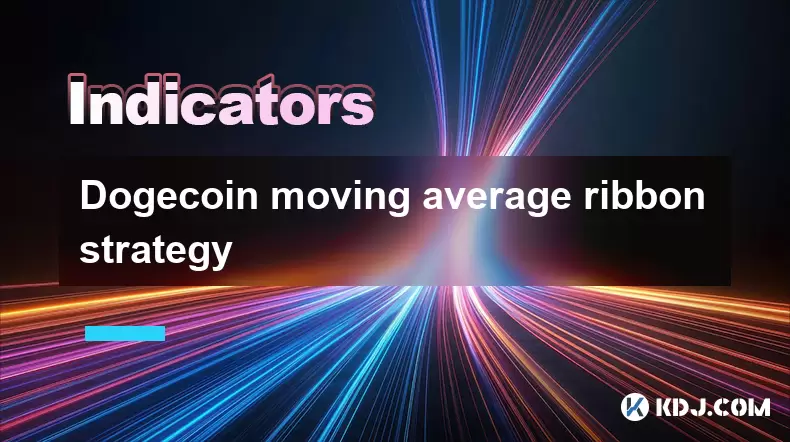
Dogecoin moving average ribbon strategy
Jul 05,2025 at 07:32pm
What is the Dogecoin Moving Average Ribbon Strategy?The Dogecoin moving average ribbon strategy is a technical analysis approach used by traders to identify potential trends and reversals in the price of DOGE. This method involves plotting multiple moving averages (MAs) on a price chart, typically of varying lengths, which visually form a 'ribbon' when ...
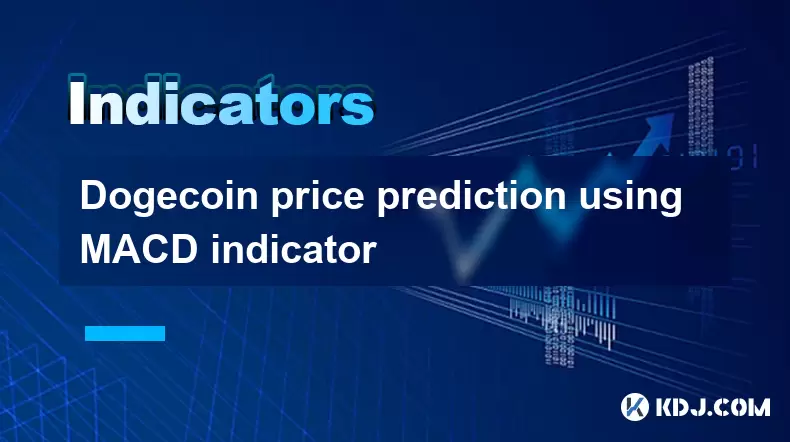
Dogecoin price prediction using MACD indicator
Jul 05,2025 at 07:18pm
Understanding the MACD Indicator in Cryptocurrency TradingThe Moving Average Convergence Divergence (MACD) is a popular technical analysis tool used by traders to identify potential price trends and reversals. It consists of three main components: the MACD line, the signal line, and the MACD histogram. The MACD line is calculated by subtracting the 26-p...
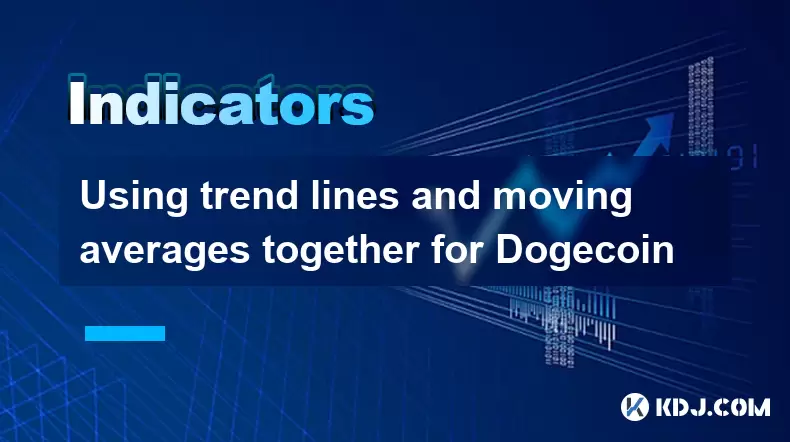
Using trend lines and moving averages together for Dogecoin
Jul 05,2025 at 07:16pm
Understanding Trend Lines in Cryptocurrency TradingTrend lines are essential tools for analyzing price movements in the cryptocurrency market. In Dogecoin trading, trend lines help identify potential support and resistance levels by connecting significant price points on a chart. When applied correctly, these lines can indicate whether the asset is in a...
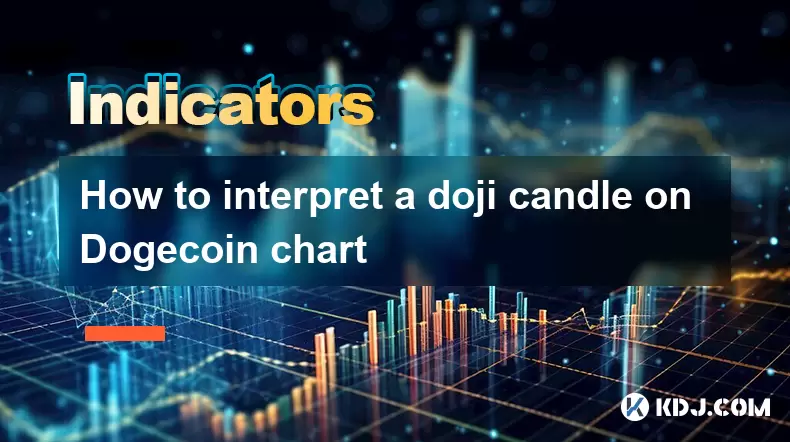
How to interpret a doji candle on Dogecoin chart
Jul 05,2025 at 07:49pm
Understanding the Doji Candlestick PatternA doji candle is a crucial technical indicator in cryptocurrency trading, especially when analyzing assets like Dogecoin. It represents market indecision and often signals potential reversals or continuation patterns. A doji forms when the opening and closing prices of an asset are nearly identical, resulting in...
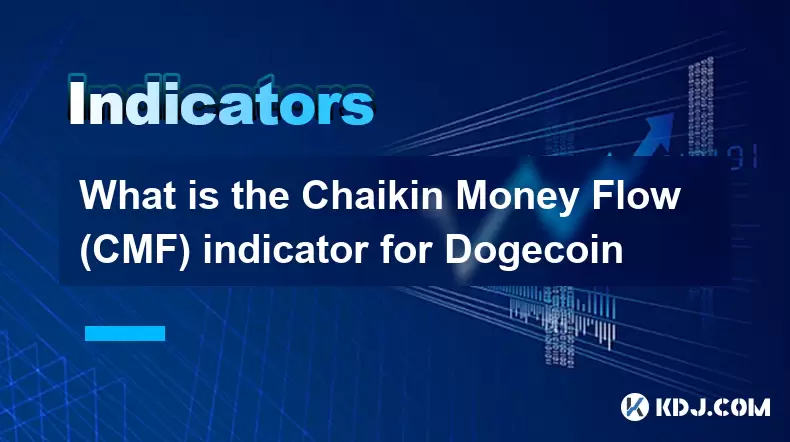
What is the Chaikin Money Flow (CMF) indicator for Dogecoin
Jul 05,2025 at 07:32pm
Understanding the Chaikin Money Flow (CMF) IndicatorThe Chaikin Money Flow (CMF) is a technical analysis indicator developed by Marc Chaikin to measure the accumulation and distribution of a financial asset over a specific period. It combines both price and volume data to assess whether institutional investors are actively buying or selling an asset. In...

How to set up a moving average crossover alert for Dogecoin
Jul 05,2025 at 07:33pm
Understanding Moving Averages and Their Relevance to DogecoinMoving averages (MAs) are among the most commonly used technical indicators in cryptocurrency trading. They help smooth out price data over a specific time period, offering traders a clearer view of trends. Dogecoin, being a highly volatile altcoin, often exhibits strong momentum when certain ...

Dogecoin moving average ribbon strategy
Jul 05,2025 at 07:32pm
What is the Dogecoin Moving Average Ribbon Strategy?The Dogecoin moving average ribbon strategy is a technical analysis approach used by traders to identify potential trends and reversals in the price of DOGE. This method involves plotting multiple moving averages (MAs) on a price chart, typically of varying lengths, which visually form a 'ribbon' when ...

Dogecoin price prediction using MACD indicator
Jul 05,2025 at 07:18pm
Understanding the MACD Indicator in Cryptocurrency TradingThe Moving Average Convergence Divergence (MACD) is a popular technical analysis tool used by traders to identify potential price trends and reversals. It consists of three main components: the MACD line, the signal line, and the MACD histogram. The MACD line is calculated by subtracting the 26-p...

Using trend lines and moving averages together for Dogecoin
Jul 05,2025 at 07:16pm
Understanding Trend Lines in Cryptocurrency TradingTrend lines are essential tools for analyzing price movements in the cryptocurrency market. In Dogecoin trading, trend lines help identify potential support and resistance levels by connecting significant price points on a chart. When applied correctly, these lines can indicate whether the asset is in a...

How to interpret a doji candle on Dogecoin chart
Jul 05,2025 at 07:49pm
Understanding the Doji Candlestick PatternA doji candle is a crucial technical indicator in cryptocurrency trading, especially when analyzing assets like Dogecoin. It represents market indecision and often signals potential reversals or continuation patterns. A doji forms when the opening and closing prices of an asset are nearly identical, resulting in...

What is the Chaikin Money Flow (CMF) indicator for Dogecoin
Jul 05,2025 at 07:32pm
Understanding the Chaikin Money Flow (CMF) IndicatorThe Chaikin Money Flow (CMF) is a technical analysis indicator developed by Marc Chaikin to measure the accumulation and distribution of a financial asset over a specific period. It combines both price and volume data to assess whether institutional investors are actively buying or selling an asset. In...
See all articles

























































































